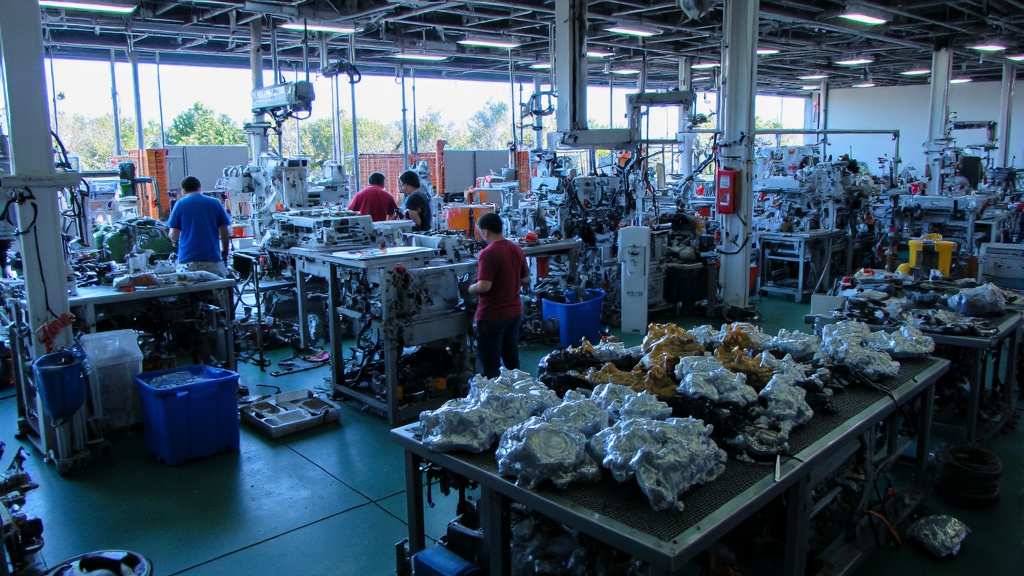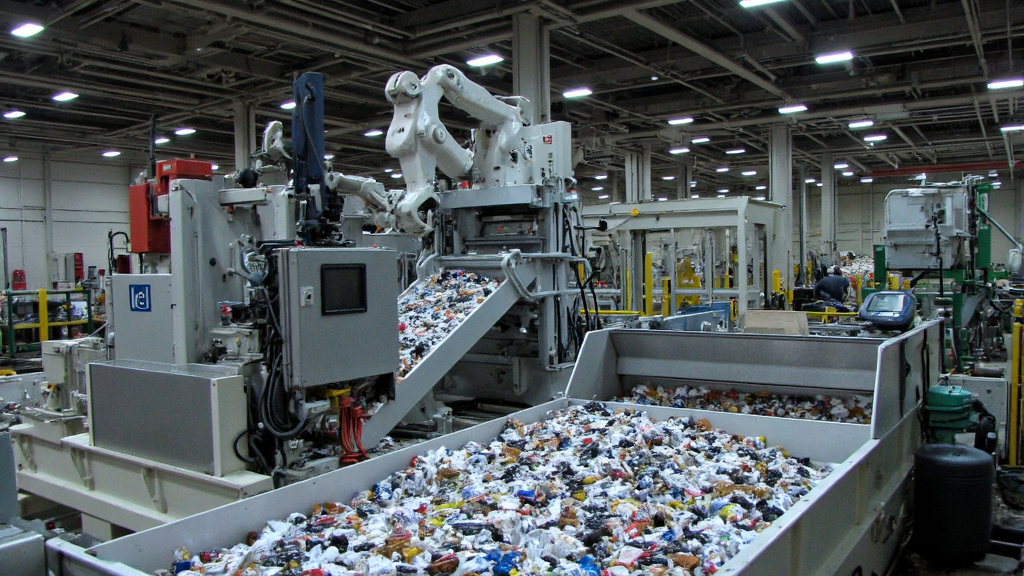5901 Botham Jean Blvd, Dallas, TX 75215
What Are High-Demand Aluminum Scrap Materials?
May 4, 2025The aluminum scrap market is thriving. Valued at USD 7.60 billion in 2023, it’s expected to reach USD 28.12 billion by 2032. This impressive 7.9% CAGR highlights the growing importance of recycled aluminum in our economy.
High-demand aluminum scrap materials are recyclable aluminum products highly sought after by industries for their sustainability, cost-effectiveness, and versatility. These materials come from various sources, including used beverage cans, automotive components, and construction waste.
The market’s expansion is driven by increasing adoption across key sectors. Automotive manufacturers appreciate aluminum’s lightweight properties for fuel efficiency. The construction industry uses it for sustainable building solutions. Electronics producers incorporate it in devices, and the packaging industry relies on it to reduce environmental impact.
What Are the Most Valuable Types of Aluminum Scrap?
Aluminum scrap comes in several valuable forms, each with distinct market demand and pricing. The aluminum recycling industry categorizes these materials based on purity, form, and source.
Aluminum Foil Scrap
Foil scrap held the largest market share in 2023, due to its extensive use in food packaging and pharmaceutical applications. Clean foil scrap is particularly valuable for its high purity levels.
Food and beverage companies generate substantial amounts of aluminum foil waste during production. These pre-consumer scraps typically contain fewer contaminants than post-consumer materials. Pharmaceutical packaging also significantly contributes to the foil scrap supply chain.
Recyclers prize clean foil because it requires minimal processing before melting, translating to cost savings throughout the recycling process. These savings make foil an attractive option for recyclers looking to maximize margins.
Cast Aluminum Scrap
Cast aluminum is another valuable category in the recycling market. This material comes primarily from automotive parts, machinery components, and household items like grills and furniture. Its distinct molded form makes it easily identifiable during sorting.
The automotive industry serves as a major source of cast aluminum scrap. Engine blocks, transmission cases, and wheel components contain significant amounts of this material, maintaining their value well in the recycling stream.
Recyclers value cast aluminum for its consistent alloy composition, which simplifies the recycling process and produces reliable secondary materials. Manufacturing sectors actively seek recycled cast aluminum for new production needs.
Aluminum Sheet Scrap
Sheet aluminum scrap remains in high demand across multiple industries. This category includes materials from construction projects, manufacturing trim, and consumer goods. Its flat, uniform nature makes it ideal for reprocessing into new sheet products.
Construction and renovation projects generate substantial amounts of aluminum sheet waste. Window frames, siding, and roofing materials contribute significantly to this scrap category. Manufacturing processes also produce valuable offcuts and excess material.
The value of sheet aluminum fluctuates based on market demands and material thickness. Thicker gauge sheets typically command higher prices than thinner varieties. Clean, uncoated sheets fetch premium prices over painted or anodized materials.
Aluminum Ingot Scrap
Aluminum ingots represent the processed form of recycled aluminum ready for reuse. Market analysts project significant growth for this segment in the coming years, driven by the automotive and construction industries.
Vehicle manufacturers seek lightweight materials to improve fuel efficiency and reduce emissions. Recycled aluminum ingots provide an environmentally responsible solution to these needs. Construction companies similarly value aluminum ingots for structural components and decorative elements.
The environmental benefits of recycled aluminum ingots contribute significantly to their market value. Producing recycled aluminum requires approximately 95% less energy than primary production, leading to substantial cost savings and reduced carbon footprints.
Old Scrap vs. New Scrap
The recycling industry distinguishes between old scrap and new scrap when processing aluminum. Old scrap comes from end-of-life consumer and industrial products, holding the largest market share in 2023.
Global sustainability initiatives continue to drive the collection and processing of old scrap. Manufacturing and construction sector growth further increases demand for recycled materials, boosting old scrap’s market position throughout 2023.
New scrap, generated during manufacturing processes, offers different advantages. This material typically contains fewer contaminants and requires less processing. Manufacturing facilities often recycle this material internally or through established recycling partners.
| Type of Aluminum Scrap | Primary Sources | Market Value (2023) |
|---|---|---|
| Aluminum Foil Scrap | Food and Beverage Companies, Pharmaceutical Packaging | Largest Market Share |
| Cast Aluminum Scrap | Automotive Parts, Machinery Components, Household Items | High Value |
| Sheet Aluminum Scrap | Construction Projects, Manufacturing Trim, Consumer Goods | Varies with Thickness |
| Aluminum Ingot Scrap | Processed Recycled Aluminum | Significant Growth Projected |
| Old Scrap | End-of-Life Consumer and Industrial Products | Largest Market Share |
| New Scrap | Manufacturing Processes | High Value due to Low Contaminants |
The recycling industry’s efficiency in processing various aluminum scrap types continues to improve. Technological advancements in sorting and purification enhance material recovery rates, ensuring valuable materials return to the production cycle rather than ending up in landfills.
Which Industries Drive the Demand for Aluminum Scrap?

The building and construction industry leads the demand for aluminum scrap, capturing the largest market share in 2023. Construction companies value aluminum for its strength-to-weight ratio, durability, and corrosion resistance. Recycled aluminum appears in building elements like window frames, roofing materials, facades, and structural components.
Modern green buildings increasingly use recycled aluminum to reduce carbon footprints while maintaining structural integrity. The material’s lightweight nature reduces structural load, and its weather-resistant properties make it ideal for exterior applications in various climates.
The automotive sector is another major consumer of aluminum scrap, with significant growth projected through 2032. Vehicle manufacturers face pressure to improve fuel efficiency and meet emission standards. Recycled aluminum offers a solution by reducing vehicle weight without compromising safety.
Renault exemplifies this trend. In 2022, the company increased its use of recycled aluminum in vehicle production, reducing carbon emissions and production costs. The shift toward electric vehicles has further accelerated aluminum demand, as manufacturers seek to offset battery weight with lighter body components.
The electronics industry is the third major driver of aluminum scrap demand. Manufacturers use recycled aluminum in electronic components, wiring, and heat exchangers due to its thermal and electrical conductivity. The growth of consumer electronics, coupled with sustainability initiatives, fuels demand in this sector.
Asian markets, particularly China, Japan, and India, dominate global aluminum scrap consumption, accounting for approximately 56% of market share in 2022, driven by robust manufacturing sectors and rapid industrialization. North America and Europe follow, with Germany, France, the United States, and Canada leading regional demand.
The packaging industry is an emerging driver for aluminum scrap, as consumers reject single-use plastics in favor of sustainable options. Beverage cans remain one of the largest sources of aluminum scrap, creating a circular economy where used containers become new products with minimal quality loss.
Old scrap—derived from post-consumer products like used beverage cans and discarded automobile parts—comprises a larger segment of the recycling market compared to new scrap from manufacturing processes. This trend reflects growing consumer participation in recycling programs and improved collection infrastructure worldwide.
Aluminum recycling provides substantial environmental benefits across all these industries. The process requires only about 5% of the energy needed for primary aluminum production, significantly reducing greenhouse gas emissions while conserving natural resources.
| Industry | Market Share (%) |
| Construction | 40.0 |
| Automotive | Not specified |
| Packaging | 60.0 |
As sustainability becomes central to corporate strategy, the demand for recycled aluminum across these industries is projected to grow steadily. Market analysts predict the global aluminum scrap market will reach approximately $145 billion by 2032, representing a compound annual growth rate of nearly 5% from its 2023 valuation.
What Are the Market Trends and Growth Opportunities?
The recycled aluminum market is experiencing significant global growth. Market valuations reached USD 49.27 billion in 2023, with projections indicating an expansion to USD 78.54 billion by 2029, reflecting a compound annual growth rate (CAGR) of 7.9% during this period.
Sustainability Driving Market Expansion
Consumer awareness of sustainable practices has reached unprecedented levels, pressuring companies across various sectors to incorporate recycled materials into their supply chains. This shift in expectations creates substantial market opportunities.
The concept of a circular economy has progressed from theory to practical business models. Regulatory frameworks increasingly support resource efficiency initiatives, creating fertile ground for recycled aluminum market participants.
Major corporations are responding with concrete commitments. Apple Inc. made headlines by transitioning to recycled aluminum in manufacturing, accelerating market growth and validating recycling as a mainstream business strategy.
Technological Innovations Reshaping the Industry
Advanced technology applications are transforming aluminum recycling processes. AI-powered sorting systems now identify and separate aluminum grades with remarkable accuracy, significantly improving efficiency compared to traditional methods.
Machine learning algorithms optimize recycling facility operations in real-time, adjusting parameters based on material composition. This results in higher quality recycled aluminum output and reduced processing costs.
Automation in the recycling chain increases processing capacity while reducing labor costs. Modern facilities employ robotics for dangerous or repetitive tasks, making recycling operations more economically viable across various market conditions.
Emerging Market Opportunities
Several industries are increasing their demand for recycled aluminum. The automotive sector seeks lightweight, sustainable materials to enhance fuel efficiency. Construction companies use recycled content to meet green building certifications, while packaging manufacturers cater to consumer preferences for environmentally responsible products.
Regional market expansion presents additional opportunities. North America currently holds the largest market share, but developing economies are adopting at accelerating rates as their manufacturing sectors grow and environmental regulations strengthen.
The global push toward carbon neutrality significantly benefits aluminum recycling. Recycled aluminum production requires about 95% less energy than virgin aluminum, directly reducing carbon emissions and aligning with worldwide climate initiatives.
Conclusion: The Future of High-Demand Aluminum Scrap Materials

The aluminum scrap recycling market is poised for significant growth and innovation. Industry projections estimate an increase from approximately $75 billion in 2023 to $120 billion by 2032, with a robust 5.5% compound annual growth rate. This growth is driven by the growing integration of aluminum scrap into global circular economy frameworks.
The future is promising as technological advancements continue to transform the industry. Automation, AI-powered sorting systems, and chemical recycling methods are enhancing how aluminum scrap is processed. These innovations improve efficiency and enhance the quality and purity of recycled aluminum, making it suitable for high-value applications in the automotive, construction, and electronics sectors.
For more information about responsible aluminum recycling solutions for your business, contact Okon Recycling at 214-717-4083. Our team of experts can help you implement sustainable recycling practices that benefit both your operations and the environment.
